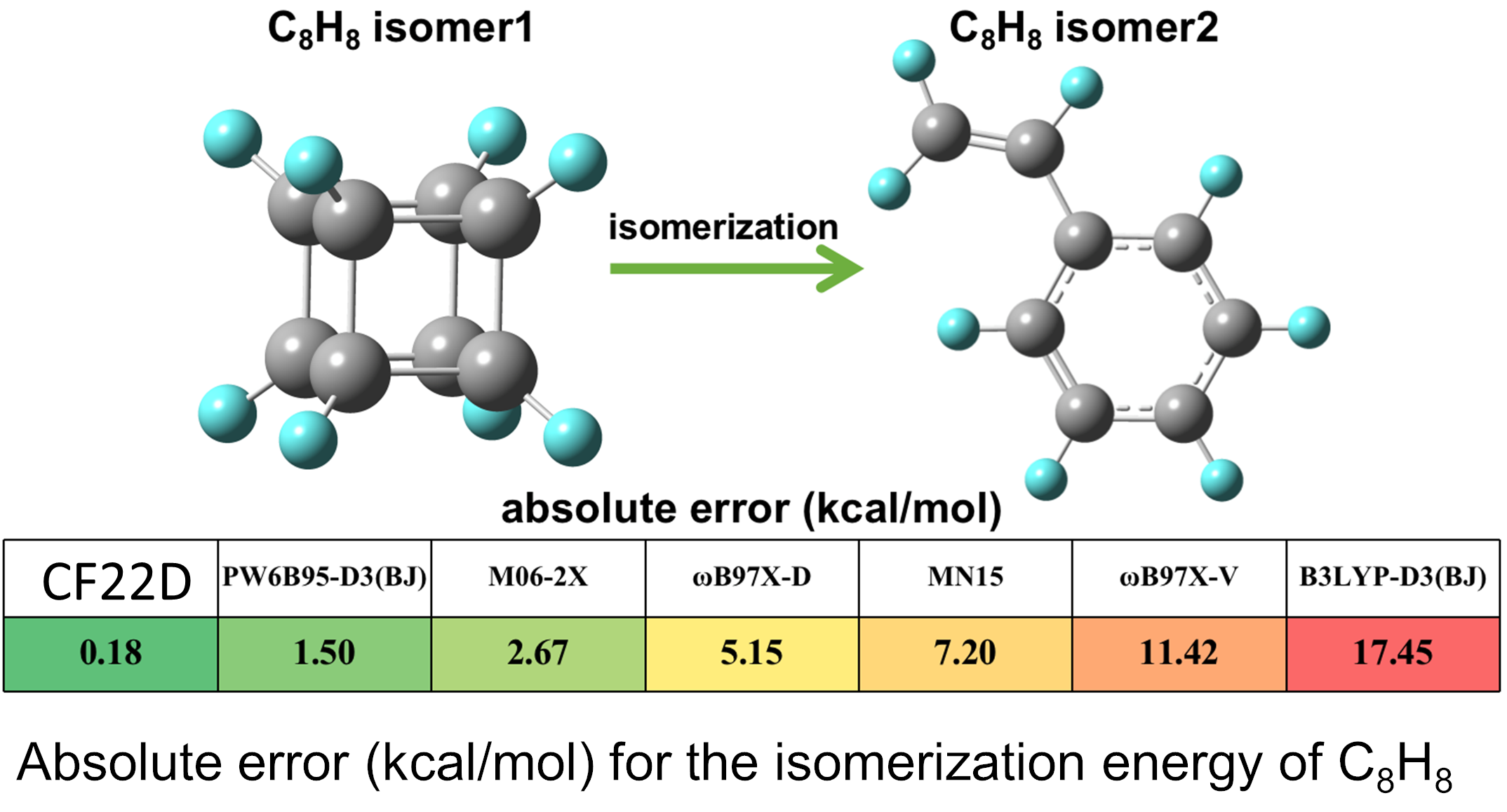Y. Liu, C. Zhang, Z. Liu, D. G. Truhlar, Y. Wang, and X. He, Nature Computational Science 3, 48-58 (2023).
The paper is available as an open access publication at
doi.org/10.1038/s43588-022-00371-5
Kohn–Sham density functional theory (KS-DFT) has been widely used in various fields of chemistry, but no functional can accurately predict the whole range of chemical properties. A universal functional that has high across-the-board accuracy for both main-group elements and transition metals is highly desirable for a broad range of chemical applications.
In this work, we optimized an exchange-correlation functional, CF22D, with high across-the-board accuracy for chemical applications by using a flexible functional form that combines a global hybrid meta-nonseparable gradient approximation that depends on density and occupied orbitals with a damped dispersion term that depends on geometry. In the spirit of machine learning, we optimized the energy functional by using a big database and active learning. The results illustrate the power of such an approach. As compared to selected but diverse previous functionals we find excellent performance. The new functional has the best overall performance for the GMTKN55 database (consisting of 55 diverse datasets) with a mean unsigned error (MUE) of 1.45 kcal/mol, and it performs well for both radical systems and nonradical systems in the GMTKN55 database. The CF22D functional gives competitive performance to the recently developed deep-learning functional DM21 from DeepMind (Science 374, 1385–1389 (2021)). It gives excellent performance for the AME418 dataset of Minnesota Database 2019 with an MUE of 2.10 kcal/mol, and it is competitive with ωB97M-V for the MGCDB84 database, especially for noncovalent ‘difficult’ systems and thermochemistry. We combined all the data points used in databases with more transition metal data to create a large, combined database DDB22 (Diverse Database 2022). For DDB22, among the compared functionals, CF22D gives the best overall results for barrier heights, isomerization energies, thermochemistry, and noncovalent interactions and the best results for the transition metal datasets that were used only for testing. Furthermore, CF22D provides the long-range van der Waals tail of potential energy curves for noncovalent interactions, and it gives good performance for vertical excitation energies, dipole moments, and molecular structures. Overall, CF22D is superior to most widely used functionals for a broad range of databases.
CF22D can be recommended for applications involving a broad range of bonding and noncovalent interactions of both main-group compounds and transition-metal compounds, which makes it appropriate for studies of catalysis, functional materials, biochemistry, and environmental chemistry.
